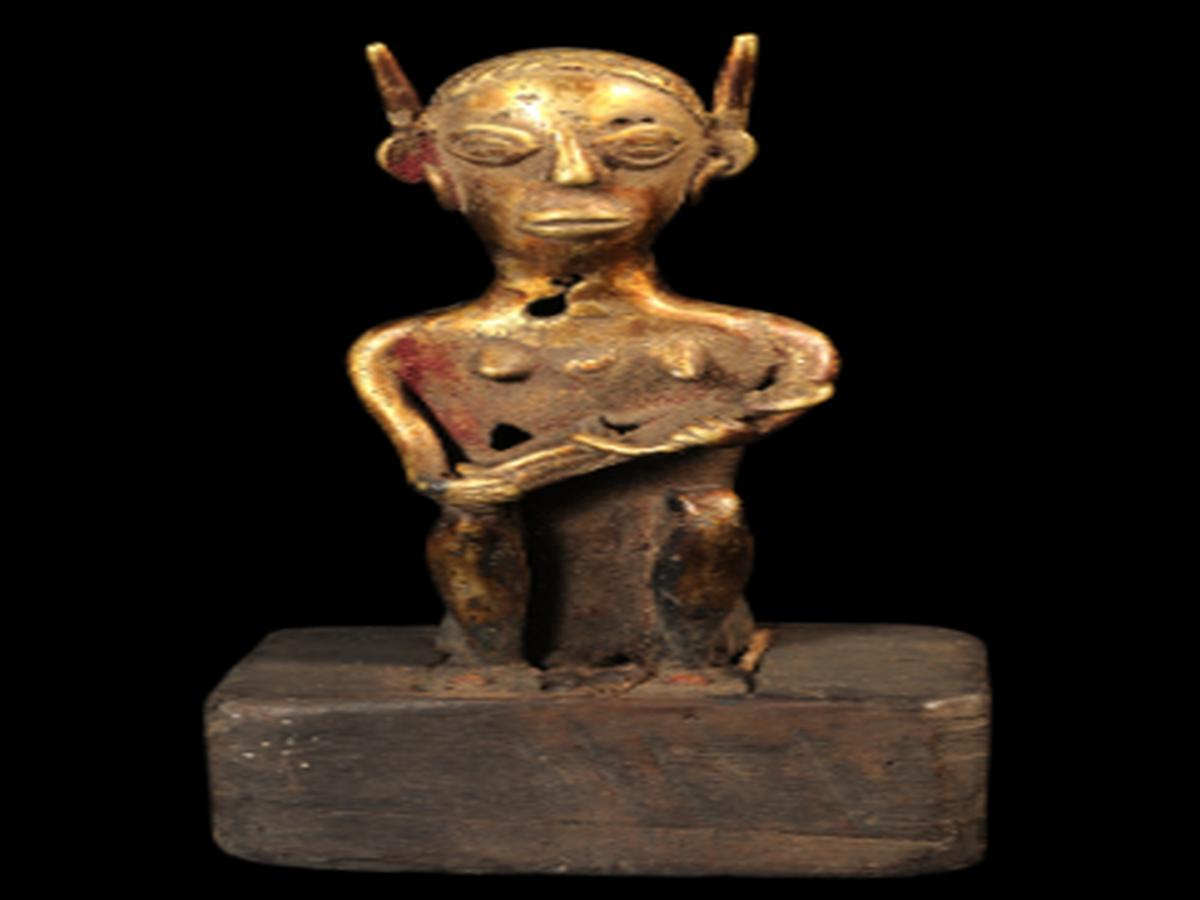State
Tribe Name
Art Type
short description
The Mother and Child Effigy is a deeply metaphorical version of family bonding and a mother-child relationship from the Konyak Naga tribe of Nagaland, India. The Konyaks mainly reside in the Mon district and are very much known for their rich oral heritage, spiritual finesse, and wood, metal, and bone craftsmanship. Among their many forms of artistic expressions, effigies are probably the most significant as representations of both ancestral reverence and daily life. The sculpture shows a seated mother and her child on her lap. The moment thus caught is an emotional one involving intimacy and protection
Thumbnail

Filter Postion
Left
Filter Background
Off
Theme
Filter Header Image

content
Image

description
The Mother and Child Effigy is a deeply metaphorical version of family bonding and a mother-child relationship from the Konyak Naga tribe of Nagaland, India. The Konyaks mainly reside in the Mon district and are very much known for their rich oral heritage, spiritual finesse, and wood, metal, and bone craftsmanship. Among their many forms of artistic expressions, effigies are probably the most significant as representations of both ancestral reverence and daily life. The sculpture shows a seated mother and her child on her lap. The moment thus caught is an emotional one involving intimacy and protection.
The seated posture of the mother indicates that the mother is therefore stable and nurturing, while the child sleeping in her lap represents soul line and care given by women in traditional Konyak society. The whole figure is mounted on a wooden pedestal, which is a common feature of such effigies, elevating the figures both materially and spiritually. Unlike the more warrior-integrated representations usually associated with Konyak effigies, this sculpture presents a very rare and soft perception of domestic life as well as the roles of women therein. This renders the respect that the tribe accords to motherhood and fertility and their connections through generations. Hence these effigies might have been meant for performing rituals concerning fertility, protection of the family, or even as memorials. They also visually narrate cultural values, now being preserved in collections like the Indian Museum, Kolkata, and celebrating the Konyak Naga legacy
The seated posture of the mother indicates that the mother is therefore stable and nurturing, while the child sleeping in her lap represents soul line and care given by women in traditional Konyak society. The whole figure is mounted on a wooden pedestal, which is a common feature of such effigies, elevating the figures both materially and spiritually. Unlike the more warrior-integrated representations usually associated with Konyak effigies, this sculpture presents a very rare and soft perception of domestic life as well as the roles of women therein. This renders the respect that the tribe accords to motherhood and fertility and their connections through generations. Hence these effigies might have been meant for performing rituals concerning fertility, protection of the family, or even as memorials. They also visually narrate cultural values, now being preserved in collections like the Indian Museum, Kolkata, and celebrating the Konyak Naga legacy
Image Mode
landscape
promoted
On
Verified
Off
